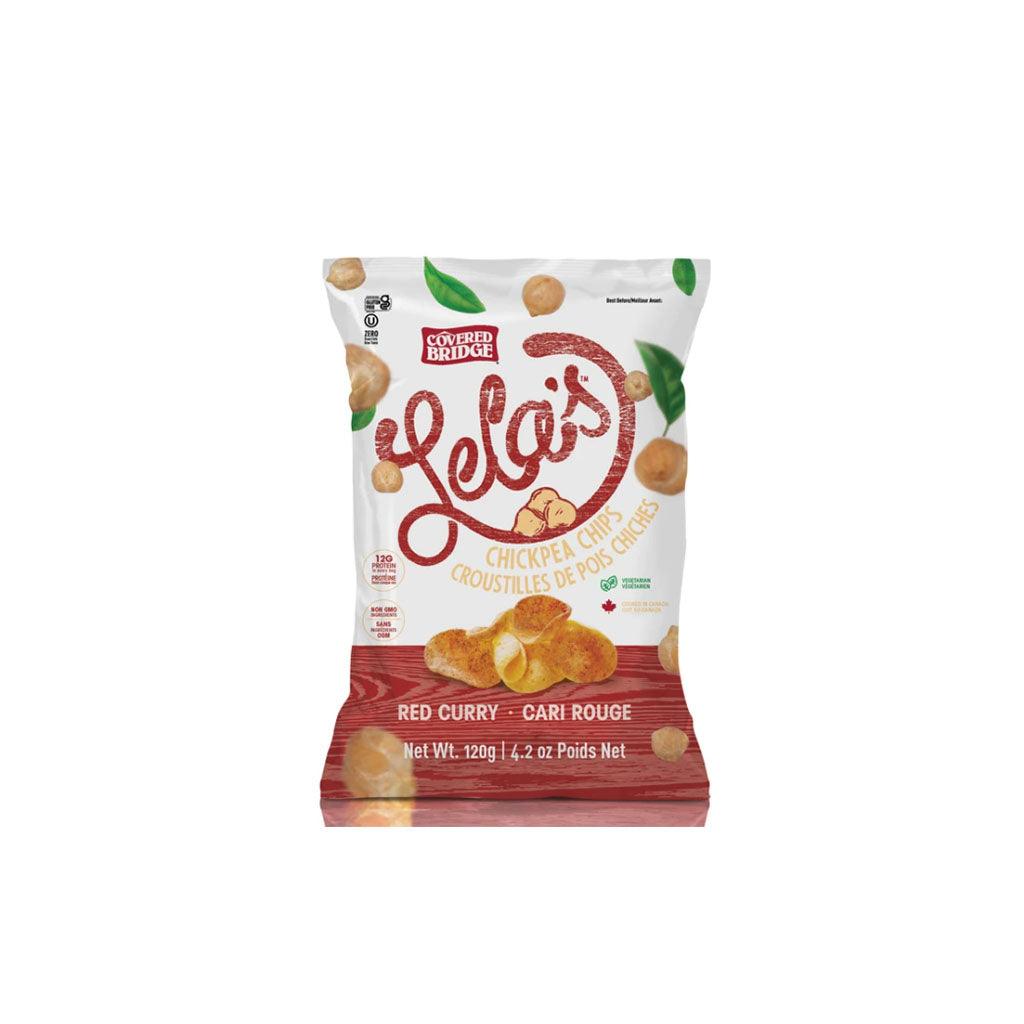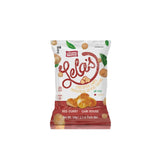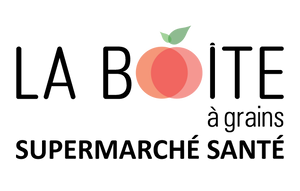

Lela's Red Curry Chickpea Chips
- 4.00$
4.79$- 4.00$
- Price per unit
- by
Save 0.79$
Brand :
Covered Bridge
SKU:
67387900152
Subtotal:
4.00$
Enjoy a crunchy, protein-rich snack with Lela's Red Curry Chickpea Chips. They're made with simple ingredients and the know-how of Covered Bridge, a Canadian company founded over 80 years ago.
- 12 g of protein per bag
- Non-GMO
- Preservative-free
- No artificial coloring
- No artificial flavoring
- Trans fat free
- Gluten-free
- Vegetarian
- Cooked in Canada
Covered Bridge continues a long family tradition with these pot-baked potato chips, produced right next to the world's longest covered bridge in Hartland, New Brunswick.
Sunflower oil, yellow pea flour, chickpea flour, potato starch, sea salt, calcium chloride, turmeric, paprika, spices, tomato powder, red bell pepper powder, lemongrass powder, flavouring.
Related products
Product title
- 4.00$
4.79$- 4.00$
- Price per unit
- by
Save 0.79$
Product title
- 4.00$
4.79$- 4.00$
- Price per unit
- by
Save 0.79$
Product title
- 4.00$
4.79$- 4.00$
- Price per unit
- by
Save 0.79$
Product title
- 4.00$
4.79$- 4.00$
- Price per unit
- by
Save 0.79$
Product title
- 4.00$
4.79$- 4.00$
- Price per unit
- by
Save 0.79$
Product title
- 4.00$
4.79$- 4.00$
- Price per unit
- by
Save 0.79$
Product title
- 4.00$
4.79$- 4.00$
- Price per unit
- by
Save 0.79$
Product title
- 4.00$
4.79$- 4.00$
- Price per unit
- by
Save 0.79$
Product title
- 4.00$
4.79$- 4.00$
- Price per unit
- by
Save 0.79$
Product title
- 4.00$
4.79$- 4.00$
- Price per unit
- by
Save 0.79$
Recently viewed products
Product title
- 4.00$
4.79$- 4.00$
- Price per unit
- by
Save 0.79$
Product title
- 4.00$
4.79$- 4.00$
- Price per unit
- by
Save 0.79$
Product title
- 4.00$
4.79$- 4.00$
- Price per unit
- by
Save 0.79$
Product title
- 4.00$
4.79$- 4.00$
- Price per unit
- by
Save 0.79$
Product title
- 4.00$
4.79$- 4.00$
- Price per unit
- by
Save 0.79$
Product title
- 4.00$
4.79$- 4.00$
- Price per unit
- by
Save 0.79$
Product title
- 4.00$
4.79$- 4.00$
- Price per unit
- by
Save 0.79$
Product title
- 4.00$
4.79$- 4.00$
- Price per unit
- by
Save 0.79$
Product title
- 4.00$
4.79$- 4.00$
- Price per unit
- by
Save 0.79$
Product title
- 4.00$
4.79$- 4.00$
- Price per unit
- by
Save 0.79$
- Choosing a selection causes the entire page to be updated.


